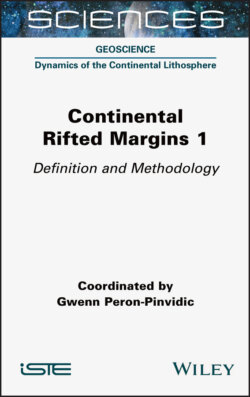Читать книгу Continental Rifted Margins 1 - Gwenn Peron-Pinvidic - Страница 31
1.3.2.2. Detachment faults
Оглавление“Detachment fault” is a term often used in rifted margin studies to refer to a specific fault plane that is distinguished from standard normal faults by its sub-regional to regional-scale geometry and low-angle apparent slip (Figure 1.19). First identified in the Basin and Range Province (Longwell 1945; Wernicke 1981), a series of publications in the 1980s and early 1990s proposed the occurrence of similar structures in other continental rifted margins (Wernicke 1985; Lister et al. 1986, 1991).
A detachment fault is a normal fault of very large-scale extent, accommodating significant displacements (tens of km), with a dip usually varying from higher angles at its breakaway to lower angles at its decollement level (Figure 1.20). The geometry, either concave-upward or concave-downward, typically includes multiple segments – the most active being the ones at higher angles, whereas the lower-angle segments are instead interpreted as segments that have been flexurally rotated during unroofing after their main phase of activity. Whether or not the low-angle segments can actually be considered as active remains debated, as these are not explained by Andersonian fault mechanics (see the section above) (Axen 2004). Detachment faults are often understood to begin at middle-lower crustal depths in zones with weak rheologies, where mylonitic structures form. Ductile shear is the main deformation mechanism at depths greater than 20 km, whereas brittle behavior dominates at shallower depths. Detachment faults are often associated with the genesis of metamorphic core complexes in continental settings and oceanic core complexes in oceanic domains (see below). Key onshore examples include the Nordfjord-Sogn Detachment in south-west Norway, the Snake Range detachment system of the Basin and Range Province in the western USA and the Whipple Mountains detachment in California.
